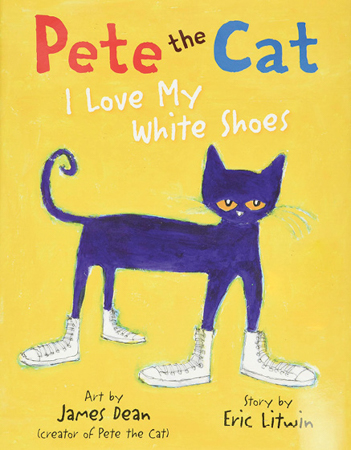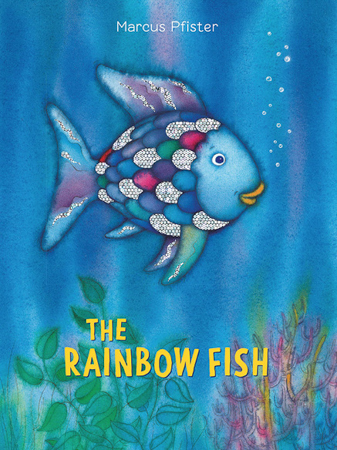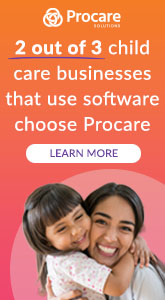Right now, someplace in the world, a teacher is showing a picture book to their students, a child is sitting on the lap of a caregiver, and another child is sitting on the floor searching through a stack of picture books, trying to choose what they want the teacher to read next. According to McGee and Schickendanz (2007), when teachers engage in repeated read alouds with young children, children’s understanding of the book, vocabulary, and concepts increase, as does their ability to make inferences and explanations. When young children are exposed to just one short book a day leading up to kindergarten, they enter elementary school having heard almost 300,000 more words than children who have not been read to (Logan et al., 2019).
Reading with young children is a core and beloved component of early childhood education. In this article, we will explore how teachers and home visiting staff used picture books with young children age birth through 6. We created a survey that included questions about how picture books were used and introduced to young children, whether a book had additional activities that the adult and child participated in, children’s reactions to the book, particular book titles chosen, the frequency used, and other perceptions of how picture books can benefit young children.
We shared the survey with master’s level students in early childhood who were already working in the classroom, along with a small sample of people who are either current or retired in the field of education. Twenty-five teachers completed the survey, among them 13 preschool teachers, three infant teachers, two toddler teachers, one kindergarten teacher, one first grade teacher, and five home visiting staff. Respondents were assigned pseudonyms to provide anonymity.
Introducing Picture Books
Our first question on the survey helped set the tone for how and when picture books were introduced. Dina, a home visitor, stated, “We encourage parents to begin reading to children in utero and provide books to parents when children are born, so parents can familiarize their children with books from the start.”
Nina, an infant teacher creates a book that features pictures of each chlld’s family when the children join her classroom. When infants seem sad or cry when their parents leave, she said she retrieves their book, and shows and talks to them about their family’s pictures in their book. Sarah, a toddler teacher shared, “When I work with children 2 and under, we introduce the books to the children by modeling how to hold the books and turn the pages. After the children observe us, we let them hold the book and turn pages by themselves. We help model fun ways for parents to read and introduce books. Often, we change the pitch of our voice or make sounds. For example, baa is what the sheep says. When you make the sound and label the animal, it can help the child remember the name of the animal.”
Children usually begin talking around 12 to 18 months; when words and sentences are modeled while reading picture books, children will mimic (Mahoney & Mahony, 2019).
Several infant and toddler teachers in the survey described how they sat with the children in their laps and pointed to the pictures in the books. Sherry, a special-needs preschool teacher declared, “My higher functioning student can speak the repeated phrases.” Louie and Sierschynski (2015) believed introducing picture books to English language learners can help stimulate exploration, imagination, and vocabulary development. Each page provides a plot allowing these learners to create a story, by having time to reflect on the picture, and not be afraid about using the correct grammar (Louie & Sierchynski, 2015). Whether or not they specifically worked with English language learners, participants from our survey felt that describing and labeling the pictures promoted vocabulary development.


 A few favorite books reported in the survey were infant touch and feel books. Angela said, “Most infants are interested when we show them pictures, but it depends on the emotion we put into it. Infants respond better when you make silly noises or sing while reading.” Toddlers enjoyed animal books of any kind, including the “Pete the Cat” series. “Rainbow Fish” was one of the favorite toddler-focused animal books mentioned. Children could touch the fish, and the fish were bright, shiny, and pretty. Preschoolers also loved animal books such as “Brown Bear, Brown Bear,” “Clifford the Big Red Dog,” “Giraffes Can’t Dance,” “Where the Wild Things Are,” and “The Very Hungry Caterpillar.”
A few favorite books reported in the survey were infant touch and feel books. Angela said, “Most infants are interested when we show them pictures, but it depends on the emotion we put into it. Infants respond better when you make silly noises or sing while reading.” Toddlers enjoyed animal books of any kind, including the “Pete the Cat” series. “Rainbow Fish” was one of the favorite toddler-focused animal books mentioned. Children could touch the fish, and the fish were bright, shiny, and pretty. Preschoolers also loved animal books such as “Brown Bear, Brown Bear,” “Clifford the Big Red Dog,” “Giraffes Can’t Dance,” “Where the Wild Things Are,” and “The Very Hungry Caterpillar.”
ADVERTISEMENT
Chloe, a parent and former teacher, shared that she and her husband also read short chapter books when the children were about 4, including the “Magic Tree House” series, Nancy Drew mysteries, “Amazing Grace,” and “The Box Car Children.” Mysteries captured the children’s attention and they could not wait until the next chapter, and the “Magic Tree House” series taught history. Lisa, a teacher and mother of two, said she and her husband “began reading to our children shortly after birth. We put our children on our laps showing them board books, and when they were having tummy time or sitting in an infant swing, a cloth book was close by. Favorite books and sing alongs from Sandra Boynton were a huge hit. As the children grew older, we integrated short stories featuring Skippyjon Jones (adding a funny voice,) Junie B. Jones, Geronimo Stilton, and, since the children seemed to be really interested in science, we read from the ‘Magic School Bus’ series.”
Favorite Activities to Generate Interactions
Most teachers surveyed believed it was important to make reading fun, and agreed with Neblett et al. (2017), that children were more engaged with books when read to, versus when they looked at books themselves. Toddler teacher Carolyn said, “My favorite way to use picture books is when a child comes to me and asks me to read to them. Reading out loud individually with a child is my favorite way to use picture books!”
Marie, a preschool teacher, dresses up as book characters during circle time, while other respondents created themes around a book, from Star Wars to camping. Creating themes throughout classrooms included creating a print-rich environment, which also helps promote literacy. During small group time, children made masks, hats, and signs that went with the story.
Being animated and showing enthusiasm for books is the best way to help children connect with the story, the characters in the book, and have fun! Tricia, an infant/toddler teacher, said, “I think thematically connected books work better, because the theme connected with the activities, which made the book more appealing to the children.”
Pointing to the words while reading to children not only increases the interaction with children, but also promotes literacy development (Gabas et al., 2019). One preschool teacher said, “Asking open-ended questions during reading helps children become more engaged in the story. Stopping and encouraging children to make predictions is great for supporting their critical thinking skills and providing activities that connect to the story makes the experience meaningful, fun, and interactive.” Three of the 13 preschool teachers described how children make up their own stories to follow along with the pictures. Danielle, a home visitor noted, “We work with parents to teach infants sign language while showing pictures in the books. We also sing songs like, ‘You Are My Sunshine’ when they see a picture of a sun.”
Benefits of Using Picture Books
Not everyone chooses books that showcase diversity, including books where children can identify with their own gender; yet, children benefit by reading books that can help them imagine their own lives and the lives of others (Evans et al., 2017; Mantai & Kervin, 2015). Several preschool teachers brought up diversity or gender in their answers. Sydney, a preschool teacher, had her students make a book using “Brown Bear, Brown Bear” as a template. The children enjoyed seeing themselves and their friends in the pictures, learning about similarities and differences in their families and cultures. These students often asked for this book to be shared at circle time, so they could share with the class.
“Looking at picture books can help increase social-emotional development” said Emma, a preschool teacher. Emma shared that she searches for books that promote friendship, sharing, jealousy, and even fighting over toys. “‘The Berenstain Bears’ is a series of books that I put in the classroom for children to read. I also select these books when I observe children in my classroom having an issue that I know one of the books addresses. I had one child in the class that had a new baby sister, so I read the book called ‘New Baby.’ Reading this book and spending time with this child one-on-one seemed to help him feel special, while getting used to a new baby that was requiring attention from his parents at home. I even lent the book to the parents, so they could read it to their son and talk to him about his new role of big brother.”
Whether you are reading picture books that have text, or making up a story to accompany the pictures in the book, all of the activities mentioned in this article can help promote literacy. Our anecdotal research clearly shows that being enthusiastic while reading books can, and will, hold the interest of young children. Sometimes children want to listen to the story, look at the pictures, laugh, sing, act out a story, or try to make up their own stories. And that is great.
Everyone surveyed agreed that children should have access to age-appropriate books, preferably daily. Participants described a library in their classroom, a book corner, a basket of books, or different places throughout where books were accessible to children. Most children in the small sample study enjoyed tactile books, books about animals, and popular Disney or super hero characters. It does not matter whether you read to the children during circle time, small group time, or one-on-one. Instead, if you are providing a variety of books accessible to children of all ages, and making reading a fun and ongoing activity, you are setting up children to make memories they will not soon forget.
References
Evans, S., Gilbert, S., & Doyle, T. (2017). Discovering their identity. Literacy Today, May/June, 20-21.
Gabas, C., Marante, L., & Cabell, S.Q. (2019). Fostering preschoolers’ emergent literacy: Recommendations for enhanced literacy experiences and collaborative instruction. Perspectives of the ASHA Special Interest Groups, 4(1), 167-176.
Logan, J.A.R., Justice, L.M., Yumus, M., & Chaparro-Moreno, L.J. (2019). When children are not read to at home: The million-word gap. Journal of Developmental and Behavioral Pediatrics, 40(5), 383-386.
Louie B. & Sierschynski, J. (2015). Enhancing English language learner’s language development using wordless picture books. The Reading Teacher, 69(1), 103-111.
Mahony, L. & Mahony, T. (2019). Promoting oral language with non-verbal young children. Practical Literacy, 24(1), 18-19.
McGee, L.M. & Schickendenz, J.A. (2007). Repeated interactive read-alouds in preschool and kindergarten. The Reading Teacher, 60(8), 742-751.
Neblett, N.G., Gallagher, K.C., Iruka, L.U., Odom, S.L., & Bruno, E.P. (2017). Books and toddlers in child care: Under what conditions are children most engaged? Child Youth Care Forum, 46(1), 473-493.
Related
ADVERTISEMENT












